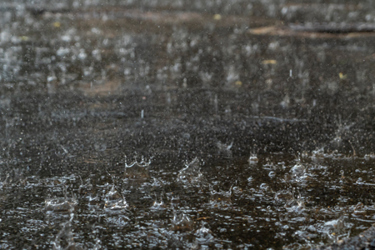How Capturing Rain Can Contribute To Environmental Safety
By Ainsley Lawrence

There are many ways to capture stormwater — whether as a homeowner, business, or municipality — and even more benefits.
Warmer air holds more water. That means that, across the globe, climate scientists are predicting increased, if irregular, precipitation rates.1 Making the most of these sudden downpours is key, as climate change will also lead to more droughts and heat waves.
Eco-friendly plumbing technology can enhance efforts to combat climate change and minimize damage due to water runoff. Effective water management systems can mitigate the risk of floods in some areas by strengthening stormwater systems and absorbing sudden downpours.
Effective rainwater harvesting systems can also prevent runoff contamination and protect local ecosystems. This benefit is much needed, as high rainfall rates can lead to pollution in the local area. By harvesting water effectively, communities can increase their resilience and begin to harness the power of rainwater runoff.
Rainwater As A Resource
Treating rainwater as a precious resource is central to efforts to reduce water waste, increase resilience, and improve environmental safety in neighborhoods. Supporting this shift in mindset is critical, as community stakeholders will need to be convinced that rainwater harvesting is worth investing in before a flash flood or drought strikes. As such, rainwater harvesting advocates must highlight the benefits of harvesting,2 which include:
- Improved stormwater management;
- Reduced risk of contamination near industrial and agriculture sites;
- Reduced water bills; and
- Improved water management during droughts and dry spells.
Countries not receiving high precipitation have already invested in rainwater harvesting and are leading the charge in treating rainwater as a precious resource. In the UAE, researchers from Khalifa University have recently debuted an atmospheric water generator3 capable of pulling 1,000 liters per day. This atmospheric water technology utilizes solar panels to harvest water from the air and improve the resilience of communities that regularly face droughts.
In the U.S., the use of semi-porous asphalt is rare but offers a window into the future of rainwater management. Soaking up the rain4 reduces total runoff and filters some pollutants out of rainwater. This reduction can also minimize the need for salting during cold snaps and reduce costs for municipalities that would otherwise need to install drainage systems. Permeable pavements are relatively easy to install, too, and simply require the installation of pervious concrete, porous asphalt, or permeable interlocking pavers.
Home Modifications
Homeowners can aid efforts to improve environmental safety and reduce their water waste by investing in eco-friendly plumbing solutions5 that harvest rainwater. For example, homeowners who have budgeted for major upgrades to their plumbing can install green drainage systems that work in tandem with their home’s wastewater. These solutions can be effectively paired with smart systems, which can help homeowners track their water use and make data-driven decisions to enhance the overall efficiency of their rainwater harvesting efforts. This efficiency increase can help areas prone to drought.
Green drainage systems are designed to harvest and treat rainwater onsite for reuse in non-potable functions. This graywater is suitable for flushing toilets, irrigating and watering gardens, and cleaning laundry.
Implementing these solutions can reduce the strain on municipal water supplies and help conserve freshwater resources. This approach can also minimize the energy used to treat and purify water, as leveraging graywater safely can reduce the volume of water plants are responsible for treating.
Homeowners can further protect themselves and the environment by installing robust waterproofing. Properly waterproofing homes can minimize the risk of pollutants entering waterways and will enhance efforts to direct floodwaters to stormwater systems. They can also make houses more resistant to harsh weather.
Those who are concerned about the risk of flooding can aid efforts to build more resilient communities by learning how to waterproof their property. These efforts include commonsense solutions such as caulking, weatherstripping on doors, waterproof painting, and regular gutter maintenance. By investing in home fortifications, communities can protect the integrity of rainwater harvesting systems and improve the effectiveness of flood-resistance plans.
Fortifying Against Extreme Weather
An effective approach to rainwater harvesting can make communities more resilient. This is key, as global warming means that extreme weather events such as storms, droughts, and high rainfall are more likely to occur. Homeowners and municipalities can protect themselves against damage by proactively investing in rainwater harvesting techniques and mitigating the risk of flooding due to runoff.
Municipalities like Orange County, Florida, have already begun to pivot toward proactive stormwater management6 and harvesting by installing automated pumps that direct stormwater flow away from valuable structures. This moved water from storm drains that are prone to flooding to canals ensures the community can survive the many strong storms common in the area.
Governmental organizations can also utilize parking lots as temporary wetlands during periods of heavy rainfall. These wetland lots are highly effective, as water tends to pool in open, concreted areas like parking lots already. By installing semi-permeable pavements and stormwater treatment solutions, municipalities can effectively filter the heavy rainfall and ensure that the rainfall entering waterways is clean.
Installing a few water butts will not prevent a flood or reduce the risk of storm-caused water damage. However, a communityoriented approach to rainwater management can enhance efforts to mitigate flood damage in the future. A community-first approach can improve buy-in and elevate the overall effectiveness of plans to naturally reduce runoff pollutants and create more resilient towns and cities.
A community-first approach has already been championed effectively in Boscastle, UK.7 Following major flooding in 2004, community organizers partnered with governmental organizations to redesign the town with flood management and community preservation as a priority. This has led to modifications such as the widening of rivers, the installation of semi-permeable pavements, and improved use of greenspaces to soak up heavy rainfall.
Conclusion
Rainwater harvesting can reduce surface runoff and minimize the strain on water treatment plants. Harvesting graywater can save homeowners money, too, by reducing water bills. However, for rainwater harvesting systems to be effective, local governments must invest in innovative solutions like semi-permeable surfaces and should partner with local water conservation groups that are dedicated to the challenge of addressing pollutants in |rainwater runoff.
References:
- https://www.metoffice.gov.uk/weather/climate-change/effects-of-climatechange
- https://www.wateronline.com/doc/the-potential-of-rainwater-as-a-renewableresource-0001
- https://smartwatermagazine.com/news/emirates-news-agency/khalifauniversity-launches-worlds-first-solar-powered-atmospheric-water
- https://www.epa.gov/soakuptherain/soak-rain-permeable-pavement
- https://www.thermodirectinc.com/6-latest-trends-in-eco-friendly-plumbingfor-2024/
- https://www.wateronline.com/doc/fortify-your-stormwater-systems-forhurricanes-and-heavy-rain-0001
- https://my.landscapeinstitute.org/case-study/boscastle-flood-defencescheme/32146c22-d37b-e911-a99b-00224801ab04
 About The Author
About The Author
Ainsley Lawrence is a freelance writer who lives in the Northwest region of the U.S. She has a particular interest in covering topics related to tech, cybersecurity, and robotics. When not writing, her free time is spent reading and researching to learn more about her cultural and environmental surroundings. You can follow her on Twitter @AinsleyLawrenc3.
